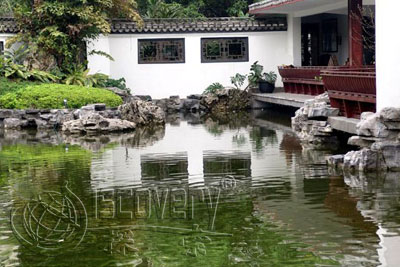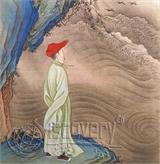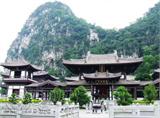Reviving Liushan and Establishing Schools (2) --- Guilin's Historical and Cultural Figures
Guilin is a historic and cultural city with a brilliant history. The beauty of Guilin's landscapes is known all over the world, which makes Guilin’s tourism culture another world-renowned brand.
In Baoqing’s second year (AD 1226), Emperor Lizong Zhao Yun bestowed the name “Qingxiang Academy” (some say it was in Ding Hai, AD 1227, when State Governor Cheng Yu requested the bestowal). This made the academy more famous. Liushan Academy is also called Qingxiang Academy, gaining its fame from this point on. In Yuan Tong’s first year, Yang Yan governed Quanzhou and introduced new reforms. In Yuan Hui Emperor’s first year of Zhi Zheng (AD 1341), Chen Guangyu served as the headmaster of Quanzhou school, following the regulations of the Bailudong Academy to discipline the students. By the Ming Dynasty’s Yongle period, there were further renovations by the state governor, Wang Yong once wrote a record for it, but unfortunately, nothing remains today.
When Gu Lin became the governor of Quanzhou, the Liushan Academy "only existed in ruins." Facing the ruins, he lamented: "The virtuous politicians of the past had much leisure time and lived among the mountains to pursue the Way. Their legacy remains solemn, and their influence inspires the local people. Times have changed, and the magnificent views have become ruins." He saw the terrain of Liushan: "The dragon-like terrain is elegant and prominent, with mountains encircling and hills surrounding. Springs flow down from high places, and strange rocks stand tall by the roadside. Ascending it, one can see a vast, open view, extending tens of miles in three directions. Outside, the peaks are steep and undulating, flat like arranged barriers. Even if an ingenious person sets it up, it would be hard to get the distance so appropriate." He "measured his strength, rebuilt two temples, so as not to destroy the traces of the ancients," and asked stone craftsmen to draw the Liu Mountain map and carve it on stone.
He invited Zhang Can, the former Nanjing Minister of War who retired and settled in Quanzhou, to write the "Record of Qingxiang Academy," which provides a detailed description of the academy's scale: "The hall where Confucius resides in peace is the main building of the academy. Behind the hall is the Liu Hou Temple, behind the temple is the Shu Xing Hall, on the left is Jia Feng Pavilion and on the right is Cun Yue Pavilion, the two pavilions complement each other. A little to the north is Xi Xi Pavilion, with cold water flowing out of the Stone Dragon's mouth, called Ying Spring. Further up are Si Xian Pavilion, Deng Chun Platform, Ji Gao Ming Pavilion, and Yang Gao Pavilion stacked together. From the Confucius Hall downwards, passing through the Apricot Altar, through the 'Return in Song' and 'Cultivate Virtue' Pavilions, winding to the Lotus Stone, out of the Cui Wei Road, and the tour of the academy is complete."




